Bearded dragons are becoming more and more popular as pets for reptile lovers around the world.
As any pet owner knows, it is important to learn about the animal you’re planning on making your pet before bringing them home so that you will be able to give them the best care available.
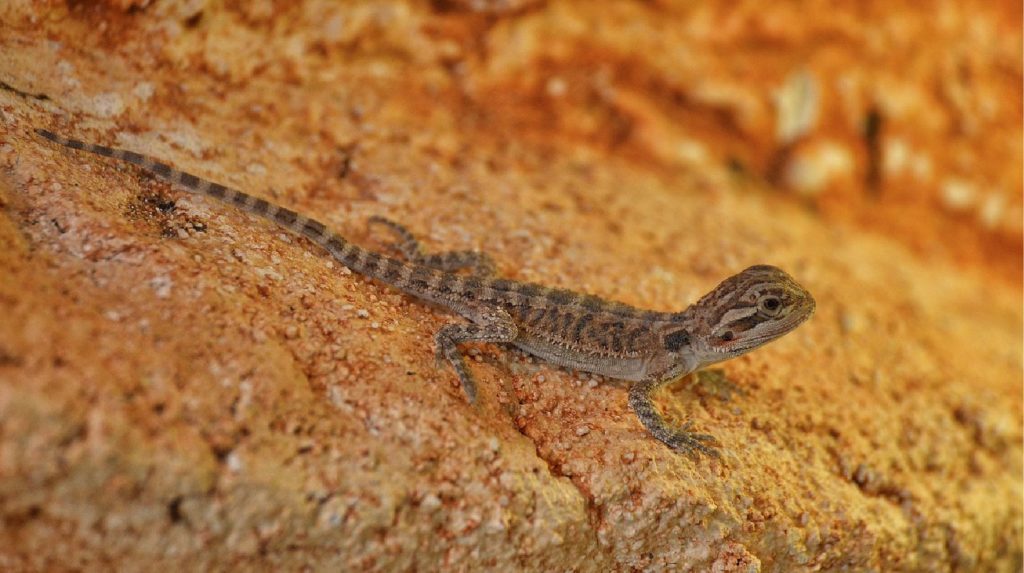
As domesticated reptiles go, baby bearded dragons are certainly not the most difficult animals to care and provide for…but there are some key requirements you’ll need to take care of if you want your pet beardie to stay healthy.
In this article, we will offer you tips, suggestions, and recommendations regarding what to look for when picking your pet, how best to set up their new homes, feeding tips, cleaning suggestions, and several other aspects of caring for a baby bearded dragon.
These animals and many others have a special place in our hearts, so by bringing you the information you need, we hope to make you an excellent caregiver for the bearded dragon that you’ll soon (or already) call your own.
Quick Navigation
Choosing a Healthy Baby Bearded Dragon
When picking out a baby bearded dragon, there are several factors you’ll want to consider.
There’s no “best” place to get your beardie from. It could be a breeder you found, or a friend that needed to get rid of their lizard.
You may be looking in a pet store or some kind of rescue shelter. Your dragon can come from anywhere, but there’s a certain way it should look and act.
What to Look For
- Healthy baby bearded dragons will be active and mobile, moving easily around its enclosure. They will have bright, clear eyes and an energetic disposition.
- They should look alert and attentive to their surroundings – nose and vent area should be clean and clear.
- If the dragon you’ve found has a slightly round little tummy, it’s likely they’ve been well fed and are already on their way to growing big and healthy.
You also shouldn’t pick out the smallest baby bearded dragon of the group. “Runts” are more likely to have been picked on and have problems later in life.
Breeders with good reputations are known to only sell the baby dragons that have demonstrated a healthy appetite and a normal shedding schedule.
These dragons usually do not get put up for sale before reaching 4 weeks of age.
If the breeder you’ve been talking to has decided to wait to sell until their dragons are a little older, you have no reason to worry.
This can often be preferred over selling the dragons when they’re younger, as slightly more mature dragons will come to you stronger, with more distinct coloration, and with personalities that they’ve had a little more time to develop.
Setting up a Bearded Dragon Habitat
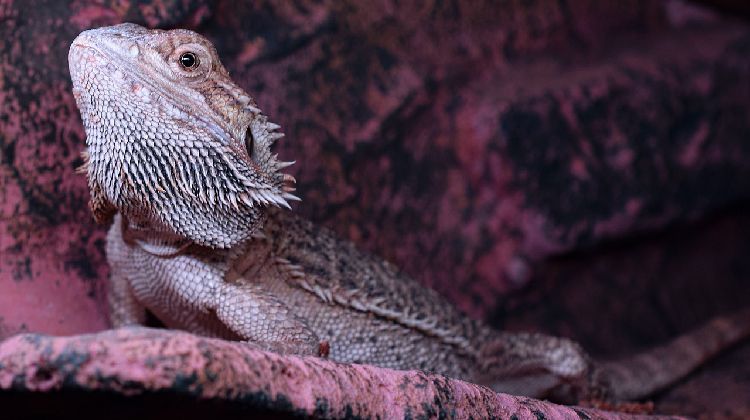
Putting together a proper setup for your bearded dragon is extremely important. Here are some factors that you will need to take into consideration:
The Tank
Even for the youngest of bearded dragons, the tank you’re setting up should be able to hold at least 20 gallons. But remember, if you start out with a tank this small, you will need to upgrade your setup very quickly.
If you’ve decided you’d rather build your lizard enclosure, it will need to be at least 48 inches long.
Tanks of this size will, however, need to be upgraded by the time your dragon reaches 6 months of age.
If you would prefer to skip the upgrading step and spring for an adult-sized enclosure right from the start, there’s no harm in doing so.
Adult bearded dragons should be housed in 125 gallon tanks (48″ x 24″ x 24″)
When it comes to layout, length is much more important than width. As a result, long tank is better than a tall tank!
Substrates

The substrate is the layer of material that will be laid on the floor of your terrarium under everything else in the tank.
Though there are several options out there, most experts agree that the safest materials are the substrates like slate tile or simply some newspaper. Reptile carpets are also widely used, but some claim that they pose a danger as bearded dragon nail can get stuck and rip off.
You can find reptile carpets or cage liners in pet stores or online that are made to simulate the grassy terrain a bearded dragon may have encountered in the wild.
If you do choose to select a cage liner, be sure to use one with a tight weave to avoid snagging your lizard’s claws, as there have been incidents of dragons ripping their claws off trying to escape.
The varieties of substrate listed above are relatively cheap and easy to clean, making them good choices for new bearded dragon owners.
Substrates to stay away from would be anything made up of many little pieces, such as sands, pebbles, or gravel.
These substrates carry with them a significant risk of gut impaction, or the ingestion of objects by your bearded dragon that leads to the blockage of their intestinal tract.
If not immediately treated and remedied, these blockages can be fatal.
Since young dragons are eager and less careful when eating, substrates made of smaller pieces can often come up with their food, causing such impaction problems.
Some bearded dragon owners have claimed that calcium based sands like Vita-Sand are a healthy alternative, as this kind of sand will be metabolized if swallowed, allowing it to more easily pass through the dragon’s system.
There are still some who worry that the risk is still there, however, so it’s up to you as the pet owner to decide if options like Vita-Sand are safe enough for your dragon.
Lighting and Heat
Note: In this section we will cover the basic light and heat requirements for your bearded dragon. Since this is a bit of a complicated subject, I recommend that you check out our complete bearded dragon lighting guide as well.
It is necessary for a bearded dragon enclosure to have some source of UV light. With this type of lighting, bearded dragons cannot process calcium, which can lead to significant problems.
One such bulb that comes highly recommended from experienced bearded dragon owners is the Zoo Med Reptisun 10.0 bulb.
It is important that you remember to change out your UV bulbs around every 6 months to maintain the correct levels of UVA/UVB lighting.
These UV levels will aid your dragon in digesting its food, metabolizing its nutrients, and maintaining a healthy growth rate.
Bearded dragons are like most other reptiles in that they require a designated “basking spot,” kept at 100-110 degrees Fahrenheit, within their tank to provide one side of the necessary thermal gradient.
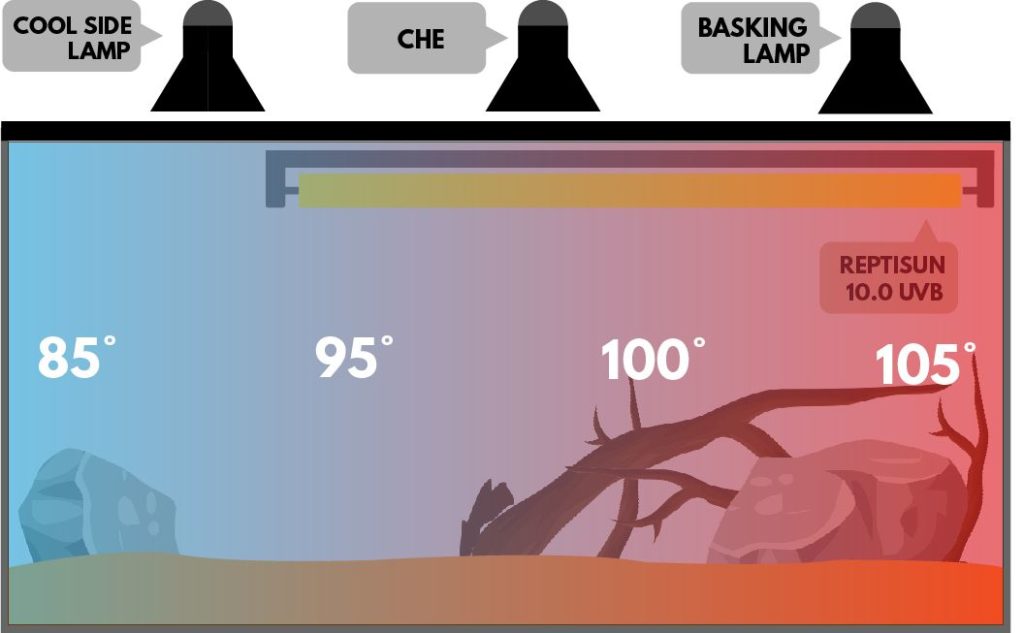
The other side of that gradient is their “cool side,” kept at around 80 degrees Fahrenheit.
Most experts recommend heating your tank using a combination of a ceramic heat emitter to keep the temperature comfortable for your dragon.
The Fluker’s Ceramic Heat Emitter is a great option option for the heated side of the tank and should be placed together on that one side, leaving the other side of the terrarium without a heating source to keep it cool.
To control the temperature of the ceramic emitter, you may want to use a thermostat, maybe a model like the BAH-500 or BAH-1000DC.
To keep track of the temperatures in both the warm and cool sides of the tank, a simple thermometer should do the trick.
Accessories
Giving for new bearded dragon a few fun accessories is a great way to keep them entertained and healthy.
Especially for young lizards, it can be beneficial to give their tanks elevated spots like plants or other structures that they can climb on or hide in.
Rock outcrops, Habba Huts, grapevine, and cork rounds have been suggested often as climbing structures by experienced owners of bearded dragons.
Your dragon might enjoy sheltering in an Exo Terra Cave or even a homemade cave, provided that you’ve made the shelter nice and sturdy to ensure that it won’t collapse and injure your dragon.
Baby Bearded Dragon Diet & Hydration
The bearded dragon’s environment should typically be kept pretty dry, but do require some water to bathe in.
Giving them fresh water in a dish 3 to 4 times per week will give them the perfect source of water to clean themselves with and to absorb.
Take care to make sure that the water isn’t too deep, though, so that your lizard doesn’t run the risk of drowning if they get stuck in the dish.
Some dragons might require an additional misting from time to time and you may consider misting their tank a couple times per week to ensure that they are kept well hydrated.
Diet Makeup
Knowing how to feed your baby bearded dragon a proper diet is one of the most important pieces of information that you should learn.
A baby bearded dragon’s meals should consist of 80% insects and 20% greens and vegetables (this ratio will flip flop as they grow older, but don’t worry about that just yet).
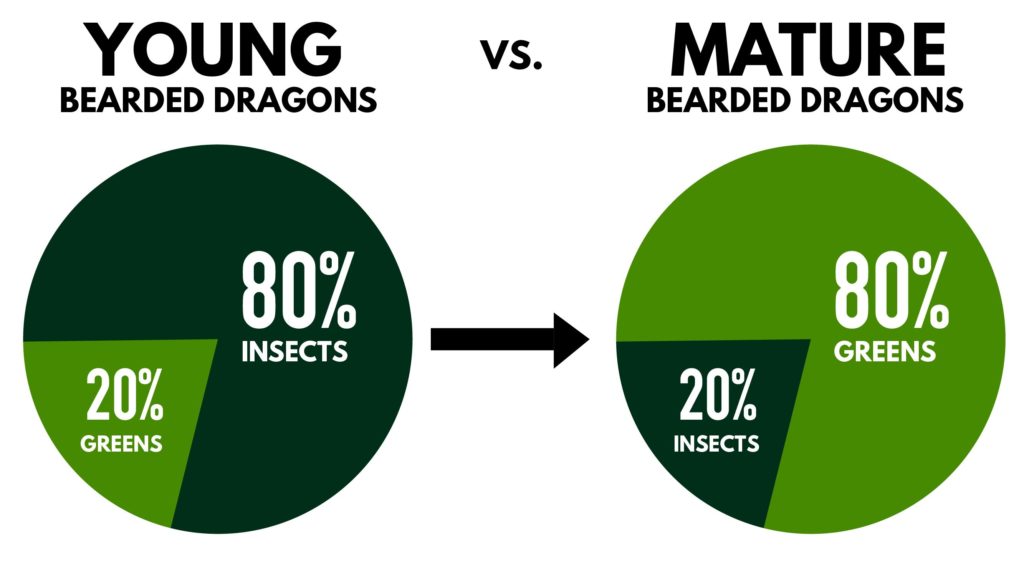
Bearded dragons can receive much moisture and nutrition from eating greens like dandelion, turnip, mustard, or collard greens, along with several other equally as healthy alternatives.
Avoid feeding your lizard greens such as iceberg lettuce, however, because it lacks the nutritional value you’re looking for.
It is important that you chop or grate any veggies you feed your pet into small pieces so that they won’t have any trouble chewing or digesting their food.
This is also a good practice for any fruits you may wish to feed your dragon as an occasional treat (papaya, some varieties of berries, mangoes, or grapes would be best- just not too much at once).
Best Baby Bearded Dragon Insects
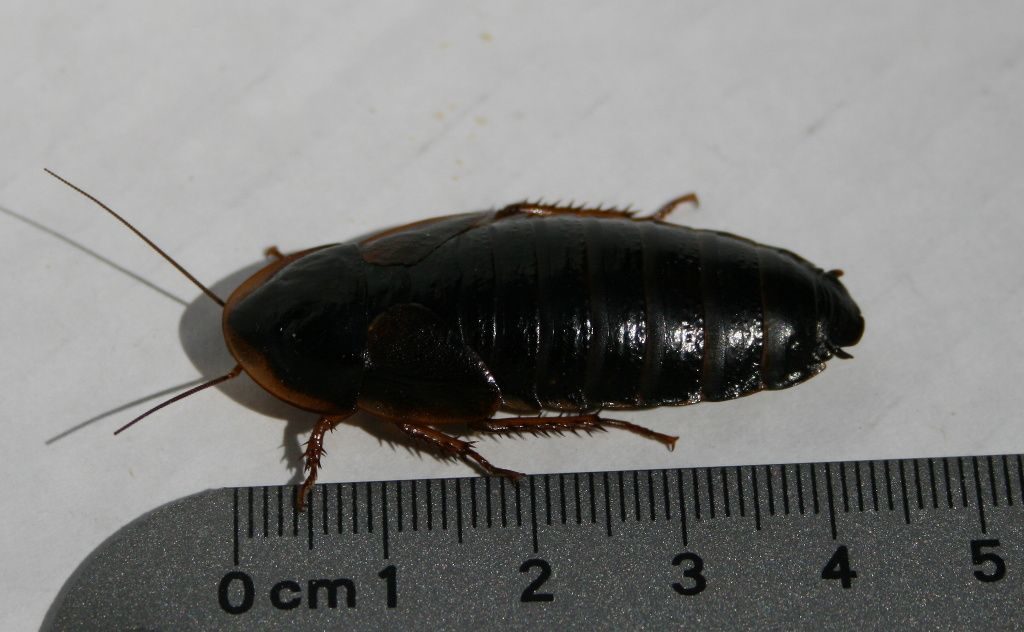
Your baby dragon needs plenty of insects, so a proper meal schedule might include 2 or 3 feedings of insects every day.
Only feed your dragon as many insects as they can eat in a 10-15 minute sitting for each meal, though, so there aren’t loose insects crawling around the tank all day.
To get the correct size of insect for your baby bearded dragon, the general rule is that you’ll want insects that are no longer than the distance between your pet’s eyes. I
nsects like crickets, mealworms, giant mealworms, Phoenix worms, superworms, and wax worms are all popular among most bearded dragon owners.
Experts list the Dubia roach as the highest quality staple feeder on the market, with approximately 5 times the nutritional value of crickets.
Which types of insects, veggies, and fruits you end up feeding your lizard will largely depend on what they prefer to eat, so offer them a wide variety at first and pay attention to which foods they seem to like best.
Gut Loading and Dusting Insects
To ensure that your dragon is getting the most beneficial meals, you’ll want to gut-load the insects before feeding them to your pet.
To gut load the insects, feed them a healthy variety of fruits and vegetables, maybe some pellet fish food or some of the commercial gut-loading formulas offered at pet stores, before feeding the insects to your bearded dragon.
This will guarantee that your lizard is eating insects full of every nutrient they’ll need to grow big and strong.
You’ll also need to keep up a schedule of dusting the live feeder insects with vitamins and calcium before certain meals.
Here are a few suggestions for supplementing you bearded dragon’s diet:
You should be dusting insects with calcium on a daily basis and with a multivitamin a few times per week.
To get a good coating of the supplement on your feeder insects, common practice is to drop the insects into a baggie, then sprinkle in the supplement.
You’ll want to gently but thoroughly shake the bag until it looks like every insect has at least a partial coating of calcium or multivitamin.
Common Care Questions
Here are a few common questions that new owners have about their baby bearded dragons:
What If My Baby Bearded Dragon Doesn’t Seem to Be Soaking?
Not a huge problem.
If they’re not too keen on hydrating themselves, you can do it for them by taking them out for a brief 10-15 minute soak in warm water.
Be sure to clean your hands both before and after coming into contact with your lizard, as our hands can pass on germs that can be dangerous for our pets to deal with, and vice versa.
During soaks, you’ll want to use distilled or RO water, or tap water that’s been run through a dechlorinator (like the one made by ReptiSafe) to make it safe for your bearded dragon.
Can My Bearded Dragon Live With Another Beardie Buddy?
There is some debate in the reptile owners world about whether or not it is a good idea to house two or more dragons together in cohabitation, but the answer isn’t all that complicated.
Bearded dragons are solitary in nature.
They are generally pretty territorial creatures who prefer not to socially interact with others unless it is for fighting or mating purposes.
It is a part of their instinctive nature to compete with one another, no matter if they were raised together or are even related.
Neither baby beardies or adult bearded dragons should be housed together if you’d like your pets to remain happy and comfortable.
What Do I Need to Know About My Dragon’s Shedding?
Many species of reptiles and amphibians take part in some form of shedding process, and bearded dragons are no different.
They shed their old skin all at once to reveal the new one, and since baby dragons are still growing at a rapid pace, they will need to shed their skin more frequently than adults.
Most of the time, dragons should be able to shed without a problem, but if they are unable to get enough moisture during shedding time, they may not be able to remove all the old skin.
It’s a good idea to check your dragon after a shed to make sure it was able to remove all the leftover old skin from its body.
Keeping your shelter a little moister during your dragon’s early stages can help ease the shedding process.
Placing a bit of sphagnum moss or Zoo Med Forest Floor Cypress Bedding in your dragon’s tank will retain a little more of the humidity in the tank, which should make shedding fairly smooth and simple.
Should your dragon retain skin even after shedding, placing it in a plastic container (preferably a small one) and lining the container with warm, wet paper towels will help.
Place the top on the container with your dragon inside and leave your pet to sit in the moisture for somewhere around 30 minutes.
The humidity levels in the container will be elevated enough to loosed the remaining skin, which will allow you to remove the excess skin with a pair of tweezers.
If the skin has not quite loosened enough, re-wet the paper towels with more warm water and put your dragon back into the container for another 30-minute session.
Do not use hot water, as it can burn and damage your young dragon’s sensitive skin.
This most important thing to remember about shedding is that you should never pull hanging skin off of your bearded dragon, especially babies.
Refer to our bearded dragon shedding guide if you would like a more in-depth explanation of this topic.
How Should I Go About Cleaning My Dragon’s Tank?
Any food that has gone uneaten and any feces that may have accumulated in the tank should be removed at the end of every day with a cup or small shovel.
If your substrate is some kind of tile, wash any dirtied tiles with soap and water and rinse them thoroughly.
If you’re using a newspaper or paper towel substrate, it should be removed and replaced any time it gets soiled.
For reptile carpet substrates, though they are difficult to clean, it can still be done.
You may still want to keep an extra carpet to switch in for the old one, should the old one get particularly dirty.
To clean stains from the glass of the tank, use a 20% white vinegar to 80% water solution to wipe the stain out.
When cleaning any climbing or shelter décor, tank accessories, or bowls that have been soiled, you should remove each piece to clean it.
Use a soapy water solution to get rid of any germs or bacteria, then rinse each object thoroughly before placing them back in the tank.
When engaging in a full tank cleaning, first make sure your pet is in a safe location outside and away from the tank and any fumes your cleaning products might give off. If you’ve got a spare tank, that will work perfectly.
If you don’t, you can just as easily place your lizard into a box lined with damp paper towels until their tank is once again ready for them.
This kind of heavy, top to bottom cleaning really only needs to take place about once a month, unless the tank has begun to smell or your dragon has fallen ill and needs a cleaner environment as it recovers.
Spot cleaning will be your most common chore, just cleaning up little messes as they occur.
You may want to keep a roll of paper towels and a spray bottle of that vinegar and water solution (maybe add in a few drops of dish soap) next to the tank for quick fixes to sudden messes and easy access during daily cleanups.
The most important cleaning you give your tank is the one before your beardie steps foot in it for the first time.
Especially if you’re reusing a tank from a previous pet, you’ll need to clean the entire quite closely before setting it up for your new little lizard.
Conclusion
We hope now that you’ve read all about the proper baby bearded dragon care and which practices are sure to get your pet’s health and growth off to a great start, you feel a little better prepared to take on the challenges and responsibilities of owning one of these lovely little lizards.
You should now have a good idea of what will be required of you when it comes to providing a home where your pet can thrive and flourish, as well as a better notion of what to look for in terms of the best habitat features, products, and food varieties to give your pet the optimal tools to keep them fit and active.
We’ve provided some of the basics and essentials for you here, but as your dragon advances in age you will need to keep looking for lizard care practices and methods that will suit their new size and preferences.
As always, any health concerns specific to your pet or questions you might have about caring for your lizard in particular should be taken up with your veterinary care provider so that you might get the most accurate information to help you keep your pet happy and safe.
We wish you well in caring for your baby bearded dragon and we’re sure that with the proper methods of care your pet will quickly grow strong and happy and will stick with you for a long time to come.
Last update on 2024-07-27 / Affiliate links / Images from Amazon Product Advertising API